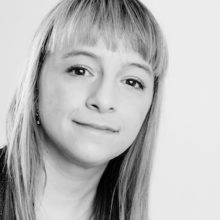
Robohub.org
Cooperative localization using Kalman filtering
Kalman filters are used in robotics to correct measurement errors. Imagine trying to precisely predict the position of an outdoor robot. The robot is equipped with a GPS and is able to measure the speed of its wheels (odometry). Only using GPS leads to measurements that are not precise while using only odometry leads to increasingly wrong estimates. Instead, what a Kalman filter does is fuse the information from odometry with the GPS measurements. This is done by, at each step of the robot control, predicting future sensor readings based on the commands given to the robot. The difference between the predicted sensor readings and the actual sensor readings is then used to update the filter. In this manner, the robot is able to improve its position estimate over time.
In work by Huang et al., groups of indoor robots attempt to estimate their global position and orientation using a special type of Kalman filter called the “Extended Kalman Filter”. Since they do not have access to GPS or landmarks in the environment, robots “cooperatively localize” by using odometry and measuring their relative position to neighboring robots. However, Kalman filters can be challenged when the measurements they make do not give them enough information with respect to what they are trying to predict. For example, sensor measurements might only provide meaningful information to correct position estimates but not global orientation. In these cases, the system is “not observable” and the Kalman filter can result in inconsistencies.
To overcome this challenge Huang et al. propose two ways of extending Kalman filters so as to constrain the observability of the system. Results are given in simulation and using four Pioneer I robots that were able to successfully estimate their pose. Odometry measurements were derived from wheel encoders and relative position was computed using an overhead camera thanks to the rectangular tags on each robot shown in the figure below. Results show that both developed algorithms outperform standard extended Kalman filters.

In the future, researchers hope to extend their approach to 3D localization.




